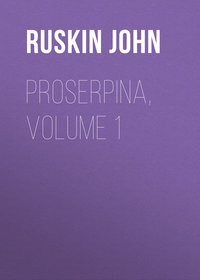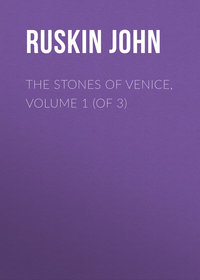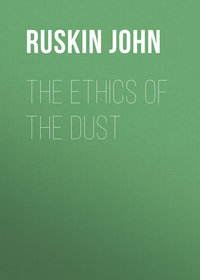
The Pleasures of England
The Normans, as they approached him, threw themselves on their knees,—covered themselves with dust, and implored his pardon and his blessing.
There's a bit of poetry—if you like,—but a piece of steel-clad fact also, compared to which the battle of Hastings and Waterloo both, were mere boys' squabbles.
You don't suppose, you British schoolboys, that you overthrew Napoleon—you? Your prime Minister folded up the map of Europe at the thought of him. Not you, but the snows of Heaven, and the hand of Him who dasheth in pieces with a rod of iron. He casteth forth His ice like morsels,—who can stand before His cold?
But, so far as you have indeed the right to trust in the courage of your own hearts, remember also—it is not in Norman nor Saxon, but in Celtic race that your real strength lies. The battles both of Waterloo and Alma were won by Irish and Scots—by the terrible Scots Greys, and by Sir Colin's Highlanders. Your 'thin red line,' was kept steady at Alma only by Colonel Yea's swearing at them.
But the old Pope, alone against a Norman army, wanted nobody to swear at him. Steady enough he, having somebody to bless him, instead of swear at him. St. Benedict, namely; whose (memory shall we say?) helped him now at his pinch in a singular manner,—for the Normans, having got the old man's forgiveness, vowed themselves his feudal servants; and for seven centuries afterwards the whole kingdom of Naples remained a fief of St. Peter,—won for him thus by a single man, unarmed, against three thousand Norman knights, captained by Robert Guiscard!
A day of deeds, gentlemen, to some purpose,—that 18th of June, anyhow.
Here, in the historical account of Norman character, I must unwillingly stop for to-day—because, as you choose to spend your University money in building ball-rooms instead of lecture-rooms, I dare not keep you much longer in this black hole, with its nineteenth century ventilation. I try your patience—and tax your breath—only for a few minutes more in drawing the necessary corollaries respecting Norman art.21
How far the existing British nation owes its military prowess to the blood of Normandy and Anjou, I have never examined its genealogy enough to tell you;—but this I can tell you positively, that whatever constitutional order or personal valour the Normans enforced or taught among the nations they conquered, they did not at first attempt with their own hands to rival them in any of their finer arts, but used both Greek and Saxon sculptors, either as slaves, or hired workmen, and more or less therefore chilled and degraded the hearts of the men thus set to servile, or at best, hireling, labour.
In 1874, I went to see Etna, Scylla, Charybdis, and the tombs of the Norman Kings at Palermo; surprised, as you may imagine, to find that there wasn't a stroke nor a notion of Norman work in them. They are, every atom, done by Greeks, and are as pure Greek as the temple of Ægina; but more rich and refined. I drew with accurate care, and with measured profile of every moulding, the tomb built for Roger II. (afterwards Frederick II. was laid in its dark porphyry). And it is a perfect type of the Greek-Christian form of tomb—temple over sarcophagus, in which the pediments rise gradually, as time goes on, into acute angles—get pierced in the gable with foils, and their sculptures thrown outside on their flanks, and become at last in the fourteenth century, the tombs of Verona. But what is the meaning of the Normans employing these Greek slaves for their work in Sicily (within thirty miles of the field of Himera)? Well, the main meaning is that though the Normans could build, they couldn't carve, and were wise enough not to try to, when they couldn't, as you do now all over this intensely comic and tragic town: but, here in England, they only employed the Saxon with a grudge, and therefore being more and more driven to use barren mouldings without sculpture, gradually developed the structural forms of archivolt, which breaking into the lancet, brighten and balance themselves into the symmetry of early English Gothic.
But even for the first decoration of the archivolt itself, they were probably indebted to the Greeks in a degree I never apprehended, until by pure happy chance, a friend gave me the clue to it just as I was writing the last pages of this lecture.
In the generalization of ornament attempted in the first volume of the 'Stones of Venice,' I supposed the Norman zigzag (and with some practical truth) to be derived from the angular notches with which the blow of an axe can most easily decorate, or at least vary, the solid edge of a square fillet. My good friend, and supporter, and for some time back the single trustee of St. George's Guild, Mr. George Baker, having come to Oxford on Guild business, I happened to show him the photographs of the front of Iffley church, which had been collected for this lecture; and immediately afterwards, in taking him through the schools, stopped to show him the Athena of Ægina as one of the most important of the Greek examples lately obtained for us by Professor Richmond. The statue is (rightly) so placed that in looking up to it, the plait of hair across the forehead is seen in a steeply curved arch. "Why," says Mr. Baker, pointing to it, "there's the Norman arch of Iffley." Sure enough, there it exactly was: and a moment's reflection showed me how easily, and with what instinctive fitness, the Norman builders, looking to the Greeks as their absolute masters in sculpture, and recognizing also, during the Crusades, the hieroglyphic use of the zigzag, for water, by the Egyptians, might have adopted this easily attained decoration at once as the sign of the element over which they reigned, and of the power of the Greek goddess who ruled both it and them.
I do not in the least press your acceptance of such a tradition, nor for the rest, do I care myself whence any method of ornament is derived, if only, as a stranger, you bid it reverent welcome. But much probability is added to the conjecture by the indisputable transition of the Greek egg and arrow moulding into the floral cornices of Saxon and other twelfth century cathedrals in Central France. These and other such transitions and exaltations I will give you the materials to study at your leisure, after illustrating in my next lecture the forces of religious imagination by which all that was most beautiful in them was inspired.
LECTURE IV.
(Nov. 8, 1884.)
THE PLEASURES OF FANCY
Cœur de Lion to Elizabeth(1189 to 1558)In using the word "Fancy," for the mental faculties of which I am to speak to-day, I trust you, at your leisure, to read the Introductory Note to the second volume of 'Modern Painters' in the small new edition, which gives sufficient reason for practically including under the single term Fancy, or Fantasy, all the energies of the Imagination,—in the terms of the last sentence of that preface,—"the healthy, voluntary, and necessary,22 action of the highest powers of the human mind, on subjects properly demanding and justifying their exertion."
I must farther ask you to read, in the same volume, the close of the chapter 'Of Imagination Penetrative,' pp. 120 to 130, of which the gist, which I must give as the first principle from which we start in our to-day's inquiry, is that "Imagination, rightly so called, has no food, no delight, no care, no perception, except of truth; it is for ever looking under masks, and burning up mists; no fairness of form, no majesty of seeming, will satisfy it; the first condition of its existence is incapability of being deceived."23 In that sentence, which is a part, and a very valuable part, of the original book, I still adopted and used unnecessarily the ordinary distinction between Fancy and Imagination—Fancy concerned with lighter things, creating fairies or centaurs, and Imagination creating men; and I was in the habit always of implying by the meaner word Fancy, a voluntary Fallacy, as Wordsworth does in those lines to his wife, making of her a mere lay figure for the drapery of his fancy—
Such if thou wert, in all men's viewAn universal show,What would my Fancy have to do,My feelings to bestow.But you will at once understand the higher and more universal power which I now wish you to understand by the Fancy, including all imaginative energy, correcting these lines of Wordsworth's to a more worthy description of a true lover's happiness. When a boy falls in love with a girl, you say he has taken a fancy for her; but if he love her rightly, that is to say for her noble qualities, you ought to say he has taken an imagination for her; for then he is endued with the new light of love which sees and tells of the mind in her,—and this neither falsely nor vainly. His love does not bestow, it discovers, what is indeed most precious in his mistress, and most needful for his own life and happiness. Day by day, as he loves her better, he discerns her more truly; and it is only the truth of his love that does so. Falsehood to her, would at once disenchant and blind him.
In my first lecture of this year, I pointed out to you with what extreme simplicity and reality the Christian faith must have presented itself to the Northern Pagan's mind, in its distinction from his former confused and monstrous mythology. It was also in that simplicity and tangible reality of conception, that this Faith became to them, and to the other savage nations of Europe, Tutress of the real power of their imagination and it became so, only in so far as it indeed conveyed to them statements which, however in some respects mysterious, were yet most literally and brightly true, as compared with their former conceptions. So that while the blind cunning of the savage had produced only misshapen logs or scrawls; the seeing imagination of the Christian painters created, for them and for all the world, the perfect types of the Virgin and of her Son; which became, indeed, Divine, by being, with the most affectionate truth, human.
And the association of this truth in loving conception, with the general honesty and truth of the character, is again conclusively shown in the feelings of the lover to his mistress; which we recognize as first reaching their height in the days of chivalry. The truth and faith of the lover, and his piety to Heaven, are the foundation, in his character, of all the joy in imagination which he can receive from the conception of his lady's—now no more mortal—beauty. She is indeed transfigured before him; but the truth of the transfiguration is greater than that of the lightless aspect she bears to others. When therefore, in my next lecture, I speak of the Pleasures of Truth, as distinct from those of the Imagination,—if either the limits or clearness of brief title had permitted me, I should have said, untransfigured truth;—meaning on the one side, truth which we have not heart enough to transfigure, and on the other, truth of the lower kind which is incapable of transfiguration. One may look at a girl till one believes she is an angel; because, in the best of her, she is one; but one can't look at a cockchafer till one believes it is a girl.
With this warning of the connection which exists between the honest intellect and the healthy imagination; and using henceforward the shorter word 'Fancy' for all inventive vision, I proceed to consider with you the meaning and consequences of the frank and eager exertion of the fancy on Religious subjects, between the twelfth and sixteenth centuries.
Its first, and admittedly most questionable action, the promotion of the group of martyr saints of the third century to thrones of uncontested dominion in heaven, had better be distinctly understood, before we debate of it, either with the Iconoclast or the Rationalist. This apotheosis by the Imagination is the subject of my present lecture. To-day I only describe it,—in my next lecture I will discuss it.
Observe, however, that in giving such a history of the mental constitution of nascent Christianity, we have to deal with, and carefully to distinguish, two entirely different orders in its accepted hierarchy:—one, scarcely founded at all on personal characters or acts, but mythic or symbolic; often merely the revival, the baptized resuscitation of a Pagan deity, or the personified omnipresence of a Christian virtue;—the other, a senate of Patres Conscripti of real persons, great in genius, and perfect, humanly speaking, in holiness; who by their personal force and inspired wisdom, wrought the plastic body of the Church into such noble form as in each of their epochs it was able to receive; and on the right understanding of whose lives, nor less of the affectionate traditions which magnified and illumined their memories, must absolutely depend the value of every estimate we form, whether of the nature of the Christian Church herself, or of the directness of spiritual agency by which she was guided.24
An important distinction, therefore, is to be noted at the outset, in the objects of this Apotheosis, according as they are, or are not, real persons.
Of these two great orders of Saints, the first; or mythic, belongs—speaking broadly—to the southern or Greek Church alone.
The Gothic Christians, once detached from the worship of Odin and Thor, abjure from their hearts all trust in the elements, and all worship of ideas. They will have their Saints in flesh and blood, their Angels in plume and armour; and nothing incorporeal or invisible. In all the Religious sculpture beside Loire and Seine, you will not find either of the great rivers personified; the dress of the highest seraph is of true steel or sound broadcloth, neither flecked by hail, nor fringed by thunder; and while the ideal Charity of Giotto at Padua presents her heart in her hand to God, and tramples at the same instant on bags of gold, the treasures of the world, and gives only corn and flowers; that on the west porch of Amiens is content to clothe a beggar with a piece of the staple manufacture of the town.
On the contrary, it is nearly impossible to find in the imagery of the Greek Church, under the former exercise of the Imagination, a representation either of man or beast which purports to represent only the person, or the brute. Every mortal creature stands for an Immortal Intelligence or Influence: a Lamb means an Apostle, a Lion an Evangelist, an Angel the Eternal justice or benevolence; and the most historical and indubitable of Saints are compelled to set forth, in their vulgarly apparent persons, a Platonic myth or an Athanasian article.
I therefore take note first of the mythic saints in succession, whom this treatment of them by the Byzantine Church made afterwards the favourite idols of all Christendom.
I. The most mythic is of course St. Sophia; the shade of the Greek Athena, passing into the 'Wisdom' of the Jewish Proverbs and Psalms, and the Apocryphal 'Wisdom of Solomon.' She always remains understood as a personification only; and has no direct influence on the mind of the unlearned multitude of Western Christendom, except as a godmother,—in which kindly function she is more and more accepted as times go on; her healthy influence being perhaps greater over sweet vicars' daughters in Wakefield—when Wakefield was,—than over the prudentest of the rarely prudent Empresses of Byzantium.
II. Of St. Catharine of Egypt there are vestiges of personal tradition which may perhaps permit the supposition of her having really once existed, as a very lovely, witty, proud, and 'fanciful' girl. She afterwards becomes the Christian type of the Bride, in the 'Song of Solomon,' involved with an ideal of all that is purest in the life of a nun, and brightest in the death of a martyr. It is scarcely possible to overrate the influence of the conceptions formed of her, in ennobling the sentiments of Christian women of the higher orders;—to their practical common sense, as the mistresses of a household or a nation, her example may have been less conducive.
III. St. Barbara, also an Egyptian, and St. Catharine's contemporary, though the most practical of the mythic saints, is also, after St. Sophia, the least corporeal: she vanishes far away into the 'Inclusa Danae,' and her "Tunis aenea" becomes a myth of Christian safety, of which the Scriptural significance may be enough felt by merely looking out the texts under the word "Tower," in your concordance; and whose effectual power, in the fortitudes alike of matter and spirit, was in all probability made impressive enough to all Christendom, both by the fortifications and persecutions of Diocletian. I have endeavoured to mark her general relations to St. Sophia in the little imaginary dialogue between them, given in the eighth lecture of the 'Ethics of the Dust.'
Afterwards, as Gothic architecture becomes dominant, and at last beyond question the most wonderful of all temple-building, St. Barbara's Tower is, of course, its perfected symbol and utmost achievement; and whether in the coronets of countless battlements worn on the brows of the noblest cities, or in the Lombard bell-tower on the mountains, and the English spire on Sarum plain, the geometric majesty of the Egyptian maid became glorious in harmony of defence, and sacred with precision of symbol.
As the buildings which showed her utmost skill were chiefly exposed to lightning, she is invoked in defence from it; and our petition in the Litany, against sudden death, was written originally to her. The blasphemous corruptions of her into a patroness of cannon and gunpowder, are among the most ludicrous, (because precisely contrary to the original tradition,) as well as the most deadly, insolences and stupidities of Renaissance Art.
IV. St. Margaret of Antioch was a shepherdess; the St. Geneviève of the East; the type of feminine gentleness and simplicity. Traditions of the resurrection of Alcestis perhaps mingle in those of her contest with the dragon; but at all events, she differs from the other three great mythic saints, in expressing the soul's victory over temptation or affliction, by Christ's miraculous help, and without any special power of its own. She is the saint of the meek and of the poor; her virtue and her victory are those of all gracious and lowly womanhood; and her memory is consecrated among the gentle households of Europe; no other name, except those of Jeanne and Jeanie, seems so gifted with a baptismal fairy power of giving grace and peace.
I must be forgiven for thinking, even on this canonical ground, not only of Jeanie Deans, and Margaret of Branksome; but of Meg—Merrilies. My readers will, I fear, choose rather to think of the more doubtful victory over the Dragon, won by the great Margaret of German literature.
V. With much more clearness and historic comfort we may approach the shrine of St. Cecilia; and even on the most prosaic and realistic minds—such as my own—a visit to her house in Rome has a comforting and establishing effect, which reminds one of the carter in 'Harry and Lucy,' who is convinced of the truth of a plaustral catastrophe at first incredible to him, as soon as he hears the name of the hill on which it happened. The ruling conception of her is deepened gradually by the enlarged study of Religious music; and is at its best and highest in the thirteenth century, when she rather resists than complies with the already tempting and distracting powers of sound; and we are told that "cantantibus organis, Cecilia virgo in corde suo soli Domino decantabat, dicens, 'Fiat, Domine, cor meum et corpus meum immaculatum, ut non confundar.'"
("While the instruments played, Cecilia the virgin sang in her heart only to the Lord, saying, Oh Lord, be my heart and body made stainless, that I be not confounded.")
This sentence occurs in my great Service-book of the convent of Beau-pré, written in 1290, and it is illustrated with a miniature of Cecilia sitting silent at a banquet, where all manner of musicians are playing. I need not point out to you how the law, not of sacred music only, so called, but of all music, is determined by this sentence; which means in effect that unless music exalt and purify, it is not under St. Cecilia's ordinance, and it is not, virtually, music at all.
Her confessed power at last expires amidst a hubbub of odes and sonatas; and I suppose her presence at a Morning Popular is as little anticipated as desired. Unconfessed, she is of all the mythic saints for ever the greatest; and the child in its nurse's arms, and every tender and gentle spirit which resolves to purify in itself,—as the eye for seeing, so the ear for hearing,—may still, whether behind the Temple veil,25 or at the fireside, and by the wayside, hear Cecilia sing.
It would delay me too long just now to trace in specialty farther the functions of the mythic, or, as in another sense they may be truly called, the universal, Saints: the next greatest of them, St. Ursula, is essentially British,—and you will find enough about her in 'Fors Clavigera'; the others, I will simply give you in entirely authoritative order from the St. Louis' Psalter, as he read and thought of them.
The proper Service-book of the thirteenth century consists first of the pure Psalter; then of certain essential passages of the Old Testament—invariably the Song of Miriam at the Red Sea and the last song of Moses;—ordinarily also the 12th of Isaiah and the prayer of Habakkuk; while St. Louis' Psalter has also the prayer of Hannah, and that of Hezekiah (Isaiah xxxviii. 10-20); the Song of the Three Children; then the Benedictus, the Magnificat, and the Nunc Dimittis. Then follows the Athanasian Creed; and then, as in all Psalters after their chosen Scripture passages, the collects to the Virgin, the Te Deum, and Service to Christ, beginning with the Psalm 'The Lord reigneth'; and then the collects to the greater individual saints, closing with the Litany, or constant prayer for mercy to Christ, and all saints; of whom the order is,—Archangels, Patriarchs, Apostles, Disciples, Innocents, Martyrs, Confessors, Monks, and Virgins. Of women the Magdalen always leads; St. Mary of Egypt usually follows, but may be the last. Then the order varies in every place, and prayer-book, no recognizable supremacy being traceable; except in relation to the place, or person, for whom the book was written. In St. Louis', St. Geneviève (the last saint to whom he prayed on his death-bed) follows the two Maries; then come—memorable for you best, as easiest, in this six-foil group,—Saints Catharine, Margaret, and Scolastica, Agatha, Cecilia, and Agnes; and then ten more, whom you may learn or not as you like: I note them now only for future reference,—more lively and easy for your learning,—by their French names,
Felicité,Colombe,Christine,——Aurée, Honorine,——Radegonde,Praxède,Euphémie,——Bathilde, EugénieSuch was the system of Theology into which the Imaginative Religion of Europe was crystallized, by the growth of its own best faculties, and the influence of all accessible and credible authorities, during the period between the eleventh and fifteenth centuries inclusive. Its spiritual power is completely represented by the angelic and apostolic dynasties, and the women-saints in Paradise; for of the men-saints, beneath the apostles and prophets, none but St. Christopher, St. Nicholas, St. Anthony, St. James, and St. George, attained anything like the influence of Catharine or Cecilia; for the very curious reason, that the men-saints were much more true, real, and numerous. St. Martin was reverenced all over Europe, but definitely, as a man, and the Bishop of Tours. So St. Ambrose at Milan, and St. Gregory at Rome, and hundreds of good men more, all over the world; while the really good women remained, though not rare, inconspicuous. The virtues of French Clotilde, and Swiss Berthe, were painfully borne down in the balance of visible judgment, by the guilt of the Gonerils, Regans, and Lady Macbeths, whose spectral procession closes only with the figure of Eleanor in Woodstock maze; and in dearth of nearer objects, the daily brighter powers of fancy dwelt with more concentrated devotion on the stainless ideals of the earlier maid-martyrs. And observe, even the loftier fame of the men-saints above named, as compared with the rest, depends on precisely the same character of indefinite personality; and on the representation, by each of them, of a moral idea which may be embodied and painted in a miraculous legend; credible, as history, even then, only to the vulgar; but powerful over them, nevertheless, exactly in proportion to the degree in which it can be pictured and fancied as a living creature. Consider even yet in these days of mechanism, how the dullest John Bull cannot with perfect complacency adore himself, except under the figure of Britannia or the British Lion; and how the existence of the popular jest-book, which might have seemed secure in its necessity to our weekly recreation, is yet virtually centred on the imaginary animation of a puppet, and the imaginary elevation to reason of a dog. But in the Middle Ages, this action of the Fancy, now distorted and despised, was the happy and sacred tutress of every faculty of the body and soul; and the works and thoughts of art, the joys and toils of men, rose and flowed on in the bright air of it, with the aspiration of a flame, and the beneficence of a fountain.



![Stones of Venice [introductions]](/covers_200/34843654.jpg)





